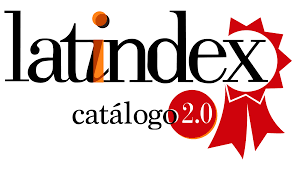Castrated male goat meat products: A marketing alternative
DOI:
https://doi.org/10.55996/dekamuagropec.v5i2.266Keywords:
goat meat, dehydrated meat, chorizo, cooked ham, added valueAbstract
Nowadays it is important to give added value to adult goats. The aim of this research was, first of all, to develop new products made from meat from castrated male goats to analyze their physicochemical properties. Secondly, obtain the production costs of said products. Three products were produced: a) dehydrated meat with three sodium and phosphate treatments, b) chorizo with two preparation formulations, and c) cooked ham with three phosphate formulations. The moisture, protein, fat, ash and sodium chloride content was determined for each product. The fat content in goat meat was lower (p ≤ 0.05) than that of commercial dehydrated meat. Goat chorizos presented on average less fat (2.5%) than commercial pork chorizo (15.4%) (p ≤ 0.05). Ham cooked with goat meat had a higher protein content than commercial ham. In the preparation of products with castrated male goat meat, the sodium content was reduced, when compared to commercial beef and pork products, respectively. Meat products from castrated male goats are a profitable alternative for goat farmers.
Downloads
References
Álvarez, S., Álvarez, C., Hamill, R., Mullen, A. M., & O’Neill, E. (2021). Drying dynamics of meat highlighting areas of relevance to dry‐aging of beef. Comprehensive Reviews in Food Science and Food Safety, 20(6), 5370–5392. https://doi.org/10.1111/1541-4337.12845
Benet, I., Guàrdia, M. D., Ibañez, C., Solà, J., Arnau, J., & Roura, E. (2015). Analysis of SPME or SBSE extracted volatile compounds from cooked cured pork ham differing in intramuscular fat profiles. LWT - Food Science and Technology, 60(1), 393–399. https://doi.org/10.1016/j.lwt.2014.08.016
Benítez Jiménez, J. G., ernández Hernández, J., Pérez Ruiz, E., Ibarra Flores, F. A., Martín Rivera, M. H., & Rodríguez Castillo, J. del C. (2018). La alimentación, el principal concepto que afecta la rentabilidad caprina en la región Mixteca de Puebla, México. AgEcon Search. file:///F:/Spec 2/Traffic Delay Model.pdf
Beserra, F. ., Madruga, M. ., Leite, A. ., da Silva, E. M. ., & Maia, E. . (2004). Effect of age at slaughter on chemical composition of meat from Moxotó goats and their crosses. Small Ruminant Research, 55(1–3), 177–181. https://doi.org/10.1016/j.smallrumres.2004.02.002
Brand, T. S., Van Der Merwe, D. A., Hoffman, L. C., & Geldenhuys, G. (2018). The effect of dietary energy content on quality characteristics of Boer goat meat. Meat Science, 139, 74–81. https://doi.org/10.1016/j.meatsci.2018.01.018
Choi, J.-H., Jeong, J.-Y., Han, D.-J., Choi, Y.-S., Kim, H.-Y., Lee, M.-A., Lee, E.-S., Paik, H.-D., & Kim, C.-J. (2008). Effects of pork/beef levels and various casings on quality properties of semi-dried jerky. Meat Science, 80(2), 278–286. https://doi.org/10.1016/j.meatsci.2007.11.028
Ebrahimi, M., Rajion, M., & Goh, Y. (2014). Effects of Oils Rich in Linoleic and α-Linolenic Acids on Fatty Acid Profile and Gene Expression in Goat Meat. Nutrients, 6(9), 3913–3928. https://doi.org/10.3390/nu6093913
Echavarría-Cháirez, F. G., De La Cruz, J. L. S., Luna, R. G., & García, G. M. (2015). Validation of a methodological strategy for the qualitative evaluation of semiarid rangelands in Zacatecas,Validación de una estrategia metodológica para la evaluación cualitativa de un pastizal mediano abierto del estado de Zacatecas. Revista Mexicana De Ciencias Pecuarias. http://www.scopus.com/inward/record.url?eid=2-s2.0-84946155971&partnerID=MN8TOARS
Figueroa-González, J. J., Servin-Palestina, M., Zegbe, J. A., & Martínez-Ruiz, A. (2022). Drying kinetics models for guava slices dried with a rustic solar dehydrator Modelos de cinética de secado para rebanadas de guayaba secadas con un deshidratador solar rústico. Journal of Experimental Systems, 9(27), 9–16.
Hernández-Hernández, L., Almaguer-Sierra, P., Barrientos-Lozano, L., Sánchez-Reyes, U. J., Rocha-Sánchez, A. Y., & Flores-Gracia, J. (2023). Patterns of Change and Successional Transition in a 47-Year Period (1973–2020) in Rangelands of the Tamaulipan Highlands, Northeastern Mexico. Forests, 14(4), 815. https://doi.org/10.3390/f14040815
Ivanovic, S., Nesic, K., Pisinov, B., & Pavlovic, I. (2016). The impact of diet on the quality of fresh meat and smoked ham in goat. Small Ruminant Research, 138, 53–59. https://doi.org/10.1016/j.smallrumres.2016.04.005
Ivanovic, S., Pisinov, B., Boskovic, M., Ivanovic, J., Markovic, R., Baltic, M., & Nesic, K. (2014). Changes in the quality of goat meat in the production of smoked ham. Tehnologija Mesa, 55(2), 148–155. https://doi.org/10.5937/tehmesa1402148I
Jia, W., Di, C., & Shi, L. (2023). Applications of lipidomics in goat meat products: Biomarkers, structure, nutrition interface and future perspectives. Journal of Proteomics, 270, 104753. https://doi.org/10.1016/j.jprot.2022.104753
Kazhybayeva, G., Agibayeva, A., Kuderinova, N., Harlap, S., Fedoseeva, N., Usov, V., Zhumanova, G., & Bakirova, L. (2019). Development of technology and assessment of nutritional value of a delicacy goat meat product. International Journal of Innovative Technology and Exploring Engineering, 8(5), 239–242.
Kim, S.-M., Kim, T.-K., Cha, J. Y., Kang, M.-C., Lee, J. H., Yong, H. I., & Choi, Y.-S. (2021). Novel processing technologies for improving quality and storage stability of jerky: A review. LWT, 151, 112179. https://doi.org/10.1016/j.lwt.2021.112179
Kovács, Á., & Seregi, J. (2015). The importance of goat milk and meat in the human nutrition. In 26th International Dagene Symposium 2015 17th–19th June, 2015 Hotel Vita, Terme Dobrna, Dobrna, Slovenia (p. 79).
Lorenzo, J. M., González-Rodríguez, R. M., Sánchez, M., Amado, I. R., & Franco, D. (2013). Effects of natural (grape seed and chestnut extract) and synthetic antioxidants (buthylatedhydroxytoluene, BHT) on the physical, chemical, microbiological and sensory characteristics of dry cured sausage “chorizo.” Food Research International, 54(1), 611–620. https://doi.org/10.1016/j.foodres.2013.07.064
Madruga, M. S., Resosemito, F. S., Narain, N., Souza, W. H., Cunha, M. G. G., & Ramos, J. L. F. (2006). Effect of raising conditions of goats on physico-chemical and chemical quality of its meat efecto de las condiciones de crecimiento de cabras en la calidad fisico-química y química de su carne. Ciencia y Tecnologia Alimentaria, 5(2), 100–104. https://doi.org/10.1080/11358120609487678
Mazhangara, I. R., Chivandi, E., Mupangwa, J. F., & Muchenje, V. (2019). The Potential of Goat Meat in the Red Meat Industry. Sustainability, 11(13), 3671. https://doi.org/10.3390/su11133671
Mazzette, R., Meloni, D., Melillo, R., Consolati, S. G., Lamon, S., Mureddu, A., & Piras, F. (2012). Evolution of chemical-physical parameters and rheological characteristics of Sarda and Maltese goat dry hams. Italian Journal of Food Safety, 1(5), 17. https://doi.org/10.4081/ijfs.2012.5.17
Miller, B. A., & Lu, C. D. (2019). Current status of global dairy goat production: an overview. Asian-Australasian Journal of Animal Sciences, 32(8), 1219–1232. https://doi.org/10.5713/ajas.19.0253
Nahed Toral, J., López Tecpoyotl, Z. G., Aguilar Jiménez, J. R., Grande Cano, D., & Delgadillo Puga, C. (2021). Compliance of Goat Farming under Extensive Grazing with the Organic Standards and Its Contribution to Sustainability in Puebla, Mexico. Sustainability, 13(11), 6293. https://doi.org/10.3390/su13116293
Ndlovu, C., Mayimele, R., Wutete, O., & Ndudzo, A. (2020). Breeding of goats: An indigenous approach to enhancing opportunities for smallholder farmers in Inyathi, Zimbabwe. International Journal of Livestock Production, 11(3), 91–101. https://doi.org/10.5897/IJLP2019.0586
Pacheco Pérez, W. A., Arias Muñoz, C. E., & Restrepo Molina, D. A. (2012). Efecto de la Reducción de Cloruro de Sodio sobre las Características de Calidad de una Salchicha Tipo Seleccionada. Rev.Fac.Nal.Agr.Medellín, 65(12), 6779–6787.
Pateiro, M., Bermúdez, R., Lorenzo, J., & Franco, D. (2015). Effect of Addition of Natural Antioxidants on the Shelf-Life of “Chorizo”, a Spanish Dry-Cured Sausage. Antioxidants, 4(1), 42–67. https://doi.org/10.3390/antiox4010042
Pophiwa, P., Webb, E. C., & Frylinck, L. (2020). A review of factors affecting goat meat quality and mitigating strategies. Small Ruminant Research, 183, 106035. https://doi.org/10.1016/j.smallrumres.2019.106035
Price Gittinger, J. (1983). Análisis económico de proyectos agrícolas (S. A. Editorial Tecnos (ed.)). http://biblioteca.fcefa.edu.bo/cgi-bin/koha/opac-detail.pl?biblionumber=1919&shelfbrowse_itemnumber=2522#shelfbrowser
Qwele, K., Hugo, A., Oyedemi, S. O., Moyo, B., Masika, P. J., & Muchenje, V. (2013). Chemical composition, fatty acid content and antioxidant potential of meat from goats supplemented with Moringa (Moringa oleifera) leaves, sunflower cake and grass hay. Meat Science, 93(3), 455–462. https://doi.org/10.1016/j.meatsci.2012.11.009
Raybaudi-Massilia, R., Mosqueda-Melgar, J., Rosales-Oballos, Y., Citti de Petricone, R., Frágenas, N. N., Zambrano-Durán, A., Sayago, K., Lara, M., & Urbina, G. (2019). New alternative to reduce sodium chloride in meat products: Sensory and microbiological evaluation. LWT, 108, 253–260. https://doi.org/10.1016/j.lwt.2019.03.057
Rodriguez Cairo, V., Bao Garcia, R., & Cardenas Lucero, L. (2017). Formulación y evaluación de proyectos. https://www.sancristoballibros.com/libro/formulacion-y-evaluacion-de-proyectos_21276
Romero, M. C., Romero, A. M., Doval, M. M., & Judis, M. A. (2013). Nutritional value and fatty acid composition of some traditional Argentinean meat sausages. Food Science and Technology, 33(1), 161–166. https://doi.org/10.1590/S0101-20612013005000007
Sánchez-Zapata, E., Zunino, V., Pérez-Alvarez, J. A., & Fernández-López, J. (2013). Effect of tiger nut fibre addition on the quality and safety of a dry-cured pork sausage (“Chorizo”) during the dry-curing process. Meat Science, 95(3), 562–568. https://doi.org/10.1016/j.meatsci.2013.05.026
Sánchez Toledano, B. I., ZEGBE-DOMÍNGUEZ, J., & CUEVAS REYES, V. (2021). Socioeconomic and competitive positioning of livestock chains in Zacatecas, Mexico. Agro Productividad, 14(3). https://doi.org/10.32854/agrop.v14i3.1801
SAS. (2016). Statistical Analysis System. https://www.sas.com/en_us/trials/software/viya/viya-trial-form.html
Sen, A. R., Santra, A., & Karim, S. A. (2004). Carcass yield, composition and meat quality attributes of sheep and goat under semiarid conditions. Meat Science, 66(4), 757–763. https://doi.org/10.1016/S0309-1740(03)00035-4
Seong, P.-N., Seo, H.-W., Kang, S.-M., Kim, Y.-S., Cho, S.-H., Kim, J.-H., & Hoa, V.-B. (2015). Beneficial Effects of Traditional Seasonings on Quality Characteristics of Fermented Sausages. Asian-Australasian Journal of Animal Sciences, 29(8), 1173–1180. https://doi.org/10.5713/ajas.15.0738
Servicio de Información Agroalimentaria y Pesquera. (2023). Anuario estadístico de la producción ganadera. https://nube.siap.gob.mx/cierre_pecuario/
Silva, F. A. P., Amaral, D. S., Guerra, I. C. D., Dalmás, P. S., Arcanjo, N. M. O., Bezerra, T. K. A., Beltrão Filho, E. M., Moreira, R. T., & Madruga, M. S. (2013). The chemical and sensory qualities of smoked blood sausage made with the edible by-products of goat slaughter. Meat Science, 94(1), 34–38. https://doi.org/10.1016/j.meatsci.2013.01.004
Talens, P., Mora, L., Morsy, N., Barbin, D. F., ElMasry, G., & Sun, D.-W. (2013). Prediction of water and protein contents and quality classification of Spanish cooked ham using NIR hyperspectral imaging. Journal of Food Engineering, 117(3), 272–280. https://doi.org/10.1016/j.jfoodeng.2013.03.014
Toldrá, F. (2010). Handbook of Meat Processing (F. Toldrá (ed.)). Wiley. https://doi.org/10.1002/9780813820897
Vidal, V. A. S., Lorenzo, J. M., Munekata, P. E. S., & Pollonio, M. A. R. (2021). Challenges to reduce or replace NaCl by chloride salts in meat products made from whole pieces – a review. Critical Reviews in Food Science and Nutrition, 61(13), 2194–2206. https://doi.org/10.1080/10408398.2020.1774495
Villegas, E., & Mertz, E. T. (1971). Chemical Screening Methods for Maize Protein Quality At Cimmyt. 20. https://repository.cimmyt.org/xmlui/bitstream/handle/10883/19397/17728.pdf?sequence=1&isAllowed=y
Webb, E. C., Casey, N. H., & Simela, L. (2005). Goat meat quality. Small Ruminant Research, 60(1–2), 153–166. https://doi.org/10.1016/j.smallrumres.2005.06.009

Downloads
Published
How to Cite
Issue
Section
License
Copyright (c) 2024 Juan José Figueroa-González, Manuel Juárez-García, Blanca Isabel Sánchez-Toledano, Francisco Guadalupe Echavarría-Cháirez, José Mancillas-Medina

This work is licensed under a Creative Commons Attribution 4.0 International License.
Los autores que publican en esta revista aceptan los siguientes términos:
- Los autores conservan los derechos de autor y conceden a la revista el derecho publicación con la obra, simultáneamente licenciada bajo una licencia de Creative Commons CC By que permite a otros compartir el trabajo, pero citando la publicación inicial en esta revista.
- Los autores pueden celebrar acuerdos contractuales adicionales separados para la distribución no exclusiva de la versión publicada de la obra de la revista (por ejemplo, publicarla en un repositorio institucional o publicarla en un libro), pero citando la publicación inicial en esta revista.
- Se permite y anima a los autores a publicar su trabajo en línea (por ejemplo, en repositorios institucionales o en su sitio web) antes y durante el proceso de presentación, ya que puede conducir a intercambios productivos, así como una mayor citación del trabajo publicado (https://web-archive.southampton.ac.uk/opcit.eprints.org/oacitation-biblio.html)














